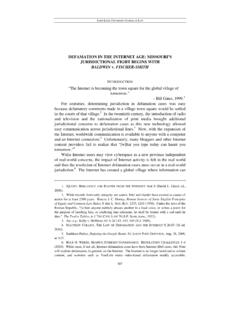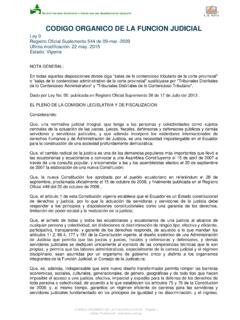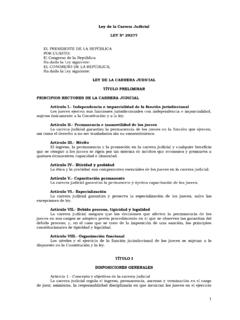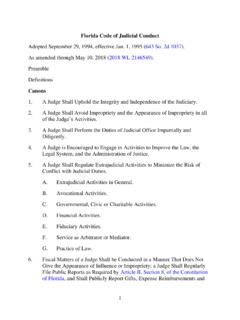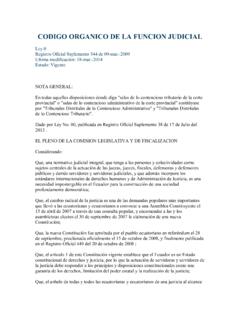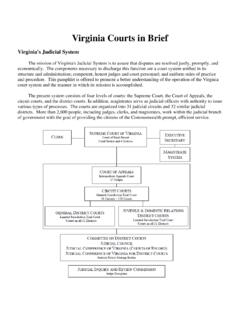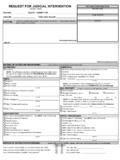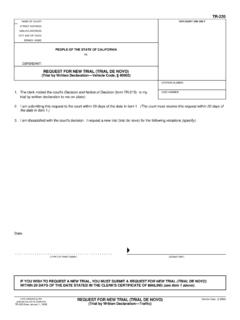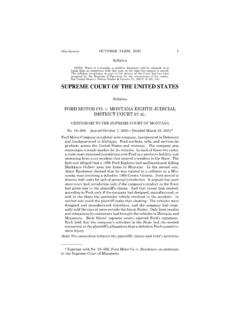Transcription of How to Read a Judicial Opinion: A Guide for New Law …
1 -1-How to read a Judicial opinion : A Guide for New Law StudentsProfessor Orin S. KerrGeorge Washington University Law SchoolWashington, DCVersion (August 2005)This essay is designed to help entering law students understand how to read cases forclass. It explains what Judicial opinions are, how they are structured, and what you should lookfor when you read them. Part I explains the various ingredients found in a typical judicialopinion, and is the most essential section of the essay. Part II discusses what you should lookfor when you read an opinion for class.
2 Part III concludes with a brief discussion of why lawschools use the case method. I. What s in a Judicial opinion ? Judicial opinions (also known as legal opinions, legal decisions, or cases) are writtendecisions authored by judges explaining how they resolved a particular legal dispute andexplaining their reasoning. An opinion tells the story of the case: what the case is about, howthe court is resolving the case, and why. Most legal opinions follow a simple formula that willseem odd to you at first, but will quickly become second nature. In this section, I ll take youthrough the basic s start with the preliminary stuff before the body of the opinion .
3 This part isn t veryimportant in most cases, but it s helpful to know anyway. The Caption: The caption is the title of the case, such as Brown v. Board of Education,or Miranda v. Arizona. In most cases, the caption reflects the last names of the two parties tothe dispute, and it tells you who was involved in the case. If Ms. Smith sues Mr. Jones, the casecaption may be Smith v. Jones (or, depending on the court, Jones v. Smith). In a criminal case,the government brings the case, and the government itself is listed as a party. If the federalgovernment charges Sam Jones with a crime, for example, the case caption would be UnitedStates v.
4 Case Citation: Underneath the case name, you will find a legal citation that tellsyou the name of the court that decided the case, the law book in which the opinion was published(and therefore can be found), and also the year in which the court decided the case. For example, Supreme Court, 485 759 (1988) refers to a Supreme Court case decided in 1988that appears in Volume 485 of the United States Reports, starting at page 759. 1 Plaintiff is a French word, and its use in American law is a holdover from the Norman conquest of theSaxons in 1066 in what is today England.
5 The Normans spoke French: the Saxons spoke Old English. For severalcenturies after the French-speaking Normans took over England, lawyers and judges in English courts spoke mostlyin law French. When the American colonies inherited the English legal system, we also inherited this Frenchtradition. Many of the distinctive legal words you will learn in your first year of law school are French in origin. Examples include: plaintiff, defendant, tort, contract, crime, suit, judge, attorney, court, verdict, allegation, party,plead, damages, appeal, assault, felony, larceny, counsel, evidence, arrest, and jury.
6 So, if you don t like legalese,blame it on William the Conqueror. -2-The Author of the opinion : The next bit of information is the name of the judge whoauthored the opinion . In most cases, the opinion will simply state a last name, followed by theinitial J. No, judges don t all have the first initial J ; the letter stands for Judge or Justice, depending on the court. For example, Hand, J. refers to Judge Hand, and Holmes,J. is Justice Holmes. In those jurisdictions where the judges are not called judges, you maysee a different initial.
7 For example, some courts call their judges Chancellors, so the initialwill be a C instead of a J. You will also see variations like for Chief Judge, for Vice Chancellor, etc. On occasion, the opinion will have the Latin phrase per curiam in placeof the judge s name. This phrase means by the court, and generally means that the opinionreflects a common view held by all of the court s judges, rather than the writings of a , enough of the preliminary stuff. Let s get to the body of the Facts of the Case: The first part of the body of the opinion is usually devoted topresenting the facts of the case.
8 In other words, what happened? Surprisingly, there are noparticular rules for what a judge must include in this section. Sometimes the fact sections arelong, and other times they are short; sometimes they are clear and accurate, and other times theyare vague or incomplete. Typically, the facts tell you the judge s understanding of the case andwhat the judge thought was an important aspect of the case that helped the judge reach thedecision. The facts of a case consist mostly of the events that occurred before the legal case wasfiled in court, and that led to the filing of the case.
9 For example, the facts might be that A pulledout a gun and shot B, or that A agreed to give B $100 and then changed her mind. However,most opinions also include a section on the procedural history of the case: that is, what happenedin the case after the case was filed in court. The procedural history usually consists of variousmotions, hearings, trials, and proceedings that went on in the case before the court that is writingthe opinion was asked to resolve the dispute at issue. You should pay very close attention to theprocedural history when you read cases for your civil procedure class (note the word procedure ); generally speaking, it is less important when you read a case for your other opinions may make your life a bit difficult by calling the parties to a case by speciallegal names, such as appellant, appellee, petitioner, respondent, plaintiff, defendant, and thelike.
10 You will get used to this eventually. For now, however, it may help to keep in mind a fewsimple guidelines. First of all, when parties first appear in court they are labeled using a prettysimple convention: in civil cases, where someone is bringing a lawsuit, the person bringing thelawsuit is known as the plaintiff,1 and the person sued is the defendant. In criminal cases, where2 The phrase common law started being used about a thousand years ago to refer to laws that werecommon to all English citizens. Thus, the word common in the phrase common law means common in the senseof shared by all, not common in the sense of not very special.







